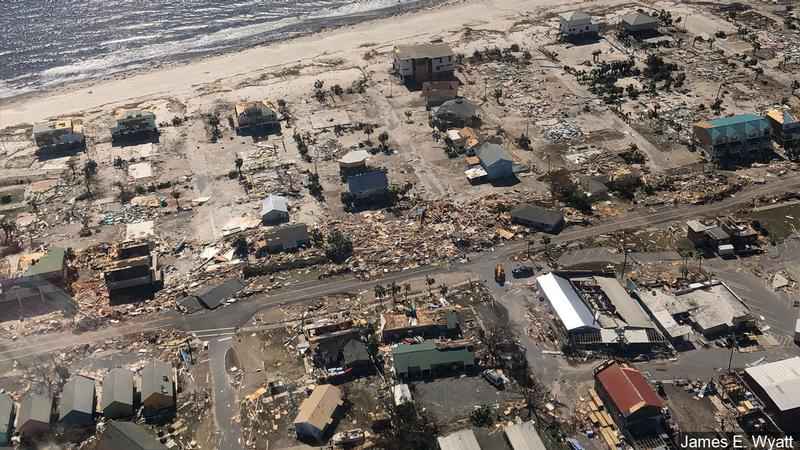
Storms can get ugly, and as the last couple of years have shown us Hurricanes keep getting bigger and more dangerous. As a Loan Servicer, one of the first things you likely think about with an impending storm is how that will affect the process of forbearance with your borrowers. How long is too long, what is too short, etc. Knowing how long you can extend collections or foreclosure based on the loan type and insurer or investor opinion is also key to helping your borrowers make it through a rough time. (Thankfully Fannie, Freddie, and FHA have been transparent about this.)
Sometimes it can be hard to put yourself in the borrower’s shoes especially if you are located in a different state. It is important to have an accurate picture of what is going on with your borrower’s homes minus the reoccurring clips of the flooded highways on the news.
As a Field Service company who manages properties of different types in different stages, it is very important for us to keep track of the weather and how it might affect the work we are doing on active vacant assets. With the entrance into storm season, we take a shift in a different direction and see how the storm affected occupied properties in good standing as well as those vacant assets.
Storms can initiate multiple processes for a mortgage servicer. For loans that are current, the servicer can have a field service partner inspect properties to validate whether or not they incurred damages. However, most servicers have a portfolio of vacant properties, too. A necessary part of handling a vacant asset for a servicer is to make sure that any damages are properly mitigated and repaired if required. As most assets are covered by a hazard insurance policy, servicers should file claims on storm damages when necessary. After a storm, a servicer’s field service vendor should document the property damages accordingly (notes and photographs), but immediately mitigate the property damages to prevent further loss. For instance, tarping a roof, boarding windows, or re-securing damaged doors (to name a few) can save a servicer or its investors thousands of dollars per property.
Once the damages are mitigated, a servicer should determine the insurance carrier and file a claim as soon as possible. Many servicers outsource the hazard claims process to a third party. Whether the hazard claims process is outsourced or handled in-house, it is important to file a hazard claim to get the claim process started. Delays in hazard claim filing can lead to avoidable conveyance delays due to delays in repairs.
After a claim is filed, it is important for a servicer to communicate with its field service partner. This can be done either by having the servicing system updated with claim notes, milestones, or other indicators, or the field service company can communicate directly with any hazard claims processing companies. This can help reduce any additional expenses and reduce conveyance timelines, by making sure that all unforeseen issues are addressed immediately.
An often overlooked piece of the claims settlement process is Recoverable Depreciation – which is a portion of the insurance settlement that is held back by the insurance carrier, but due once the repairs have been made to scope, and within the specified timeline (180 days in most cases). Communication is even more vital during this process. Recoverable Depreciation can provide as much as 30-35% in additional insurance funds for repairs. When repairs are approved, the servicer or third party claims provider should notify the insurance carrier that repairs are underway and that the intent is to claim the recoverable depreciation. Once the repairs are completed by the field service company, it is important for the servicer to notify the insurance carrier (including receipts and photos) of the repairs.
A common phrase used in the military is “squared away.” So you have to ask yourself is your vendor squared away with loss draft and emergency inspections? Is your hazard claims provider or in-house team prepared and squared away to handle an influx in claims and insurance requirements? You can never be too prepared, and in the interest of saving your borrowers a headache and mitigating risk or loss properly for your team, it is crucial to be well trained in these processes. Find a partner that can make a difference in assisting in these areas.



